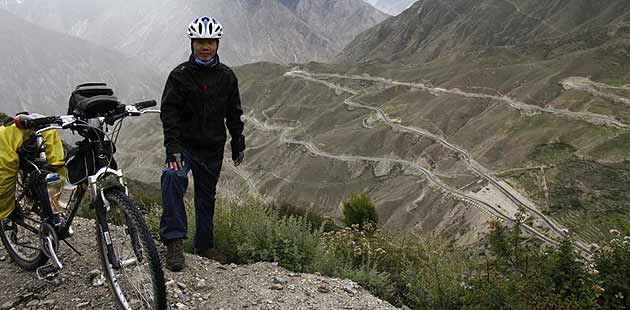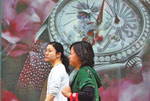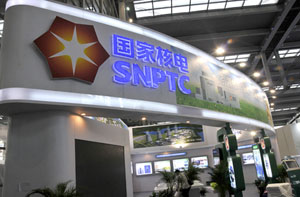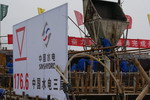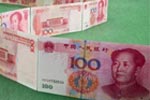Riding the big wave
Updated: 2011-09-30 15:34
By Andrew Moody (China Daily)
|
|||||||||||
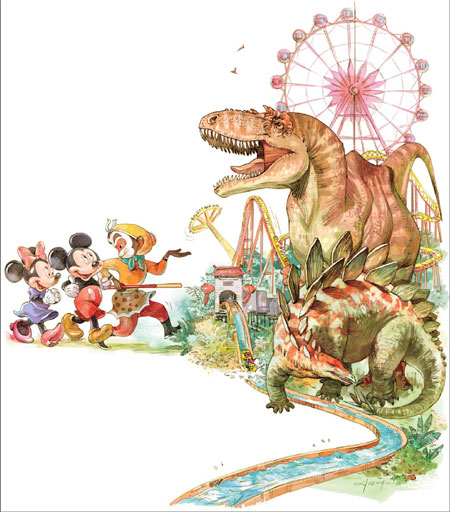
New Disney project in Shanghai set to be a game changer for the THEME PARK industry in China
Disney bigger in China than in the United States? That would have once seemed a fantasy appropriate only for one of the entertainment company's more far-fetched movies. But Mike Crawford, general manager of the Shanghai Disney Resort, which will be the biggest theme park ever built in China, believes it could become a reality.
As construction begins on the 3.9 square kilometer site in the Pudong area what is envisaged exceeds what anyone dreamt of when Chinese company OCT opened the country's first theme park in 1989 in Shenzhen.
Shanghai Disney, which is scheduled to open either at the end of 2015 or early 2016, is part of a 29 billion yuan investment ($4.4 billion).
Disney itself is stumping up 43 percent of that - 12.5 billion yuan with the rest being provided by the Shanghai Shendi Group, a 100 percent State-owned joint venture investment holding company. Disney will retain control of the management company, however.
Crawford, who has worked for Disney for 21 years, says Shanghai could be the first of a number of Disney theme parks on the Chinese mainland.
"We think as a company, both in terms of the theme park industry and every other line of business, it (China) represents a tremendous opportunity for us," he says. "We want to make sure we are doing it right and we extend the best possible experience to the guests and then we will assess growth when those other opportunities come."
With theme parks in North America and Europe being hit by the economic downturn, Asia represents a major growth opportunity for the global industry.
The region is the world's fastest growing market with attendances increasing 7 percent in the year up to 2010, according to AECOM, the global consultancy.
Disney already runs the biggest theme park in Asia - Disneyland in Tokyo - that attracted 14.5 million visitors last year.
The main focus is on China, however. Seven of the 15 theme parks with the largest attendance in Asia are in China.
Until now, the Chinese mainland has been served purely by domestic players, although borrowing influences from around the world. Disney is the first foreign operator to be allowed in.
The biggest operator OCT, which opened that first theme park, Splendid China, in the country more than 20 years ago, is the 8th largest theme park chain in the world with its best known brand being Happy Valley. It attracted nearly 20 million visitors last year.
Others include Ocean Park in Hong Kong, which is funded by a trust and run by a Hong Kong government appointed board, and had the seventh largest attendance in 2010 with 5.1 million visitors.
Fantawild Adventure, owned by the Shenzhen Huaqiang Group, currently has five parks with several other smaller projects in the pipeline.
Another major player is the Haichang Group, a conglomerate based in Dalian in Liaoning province in Northeast China.
It has eight theme parks, including the Polar Ocean Worlds at Chengdu, Wuhan and Tianjin.
The potential growth of the market - with ever more Chinese attaining middle class incomes - is what is exciting both Chinese and overseas investors.
Visitor numbers are expected to climb a massive seven-fold from 60 million in 2010 to 423 million by 2030, according to AECOM statistics.
If at some point in the century, the Chinese visit theme parks as much as Americans currently do - approximately 0.7 visits per capita each year - then visitor number could soar to 925 million, more than 15 times today's level of visits.
But the champagne corks were not quite popping at the Noppen China Theme Park Expansion Summit at the somewhat windswept barren location of last year's Shanghai Expo earlier this month.
The Chinese government announced in August it would refuse permission to all new theme park developments larger than 20 hectares or of an investment value of 500 million yuan.
Many, however, were interpreting it as being similar to an existing ban on golf course developments and that the aim was to stop local authorities giving the go-ahead to lavish hotel and property developments masquerading as theme park complexes. If so genuine theme park proposals may still get the green light.
Liu Weigong, deputy general manager of the Changzhou Amusement Park, a 33-hectare theme park in Changzhou, Jiangsu province, was one who was hoping it was business as normal.
The park is owned by the local Wujin district government and since opening in May last year has attracted 1.7 million visitors.
"I still believe the government will support real and serious projects. The measure is to stop the abuse of developers using theme parks as an excuse to do real estate development. I think a lot of developers are worried about the move, however."
Charles Read, managing director of Blooloop, a UK-based website which provides news and information for those working in the theme park industry, believes the government measure is an attempt to restore some sort of order.
"Developers were using theme parks as some sort of Trojan horse to get retail and real estate developments through," he says.
"I think the business needed regulation and what the government is trying to do is to get the industry sorted out. I don't see it as a problem."
How the major international operators will view the government's move remains to be seen.
The industry's big names such as US giants Sea World Adventure Parks and Universal Studios as well as the British operator Merlin Entertainment Group, whose brands include Legoland, Madame Tussauds and Sea Life, are said to be keen to get a slice of the China action.
They have been held back because the government has been keen to protect domestic operators. Negotiations with Disney itself were protracted.




